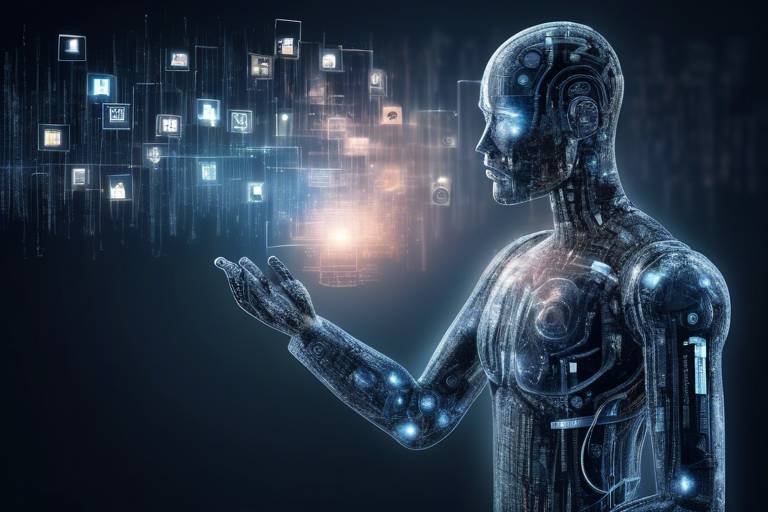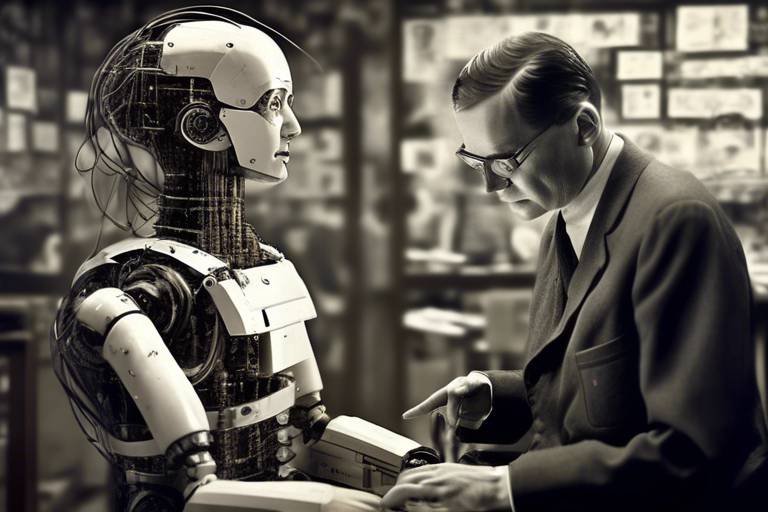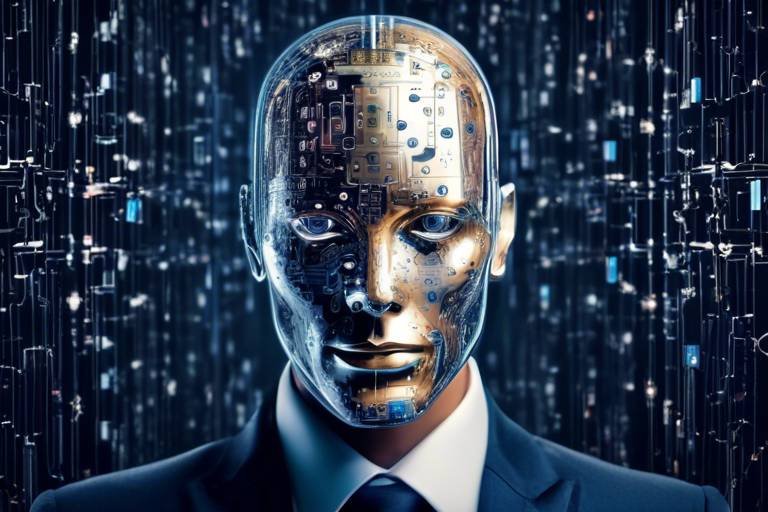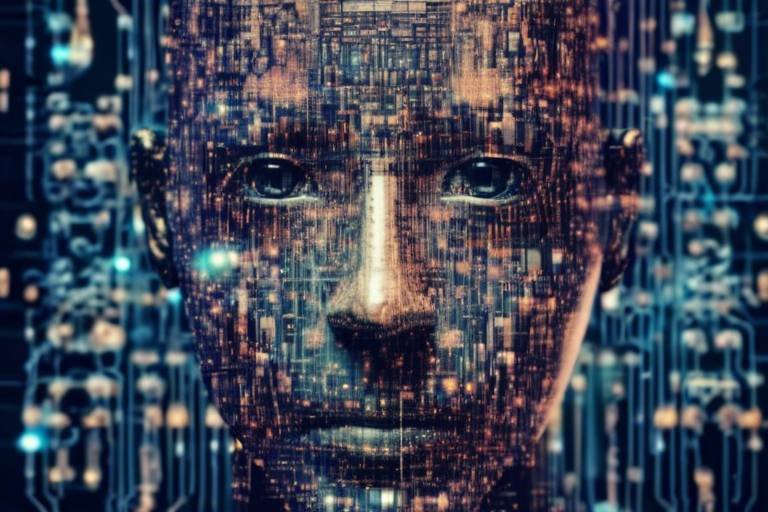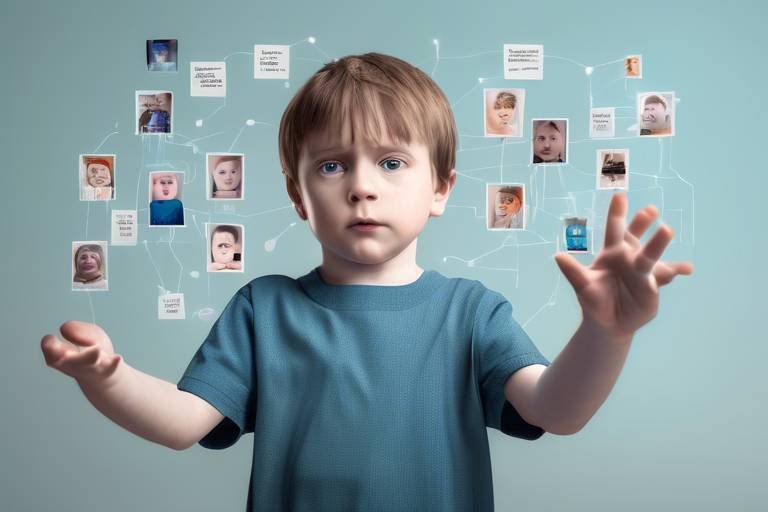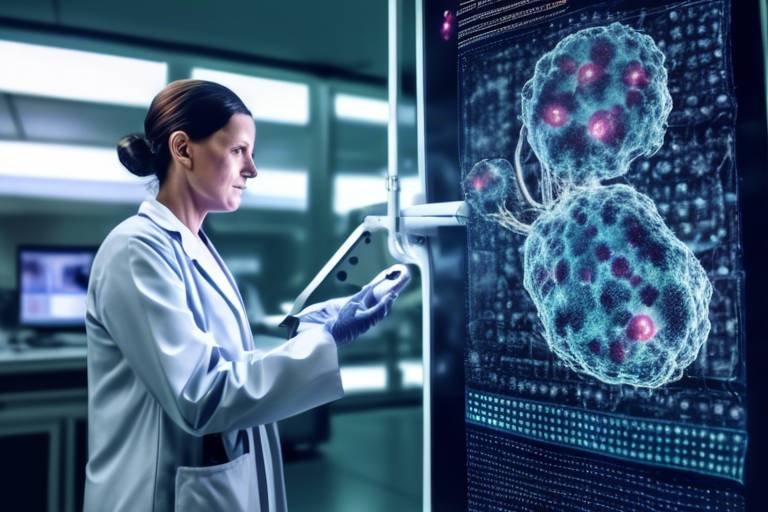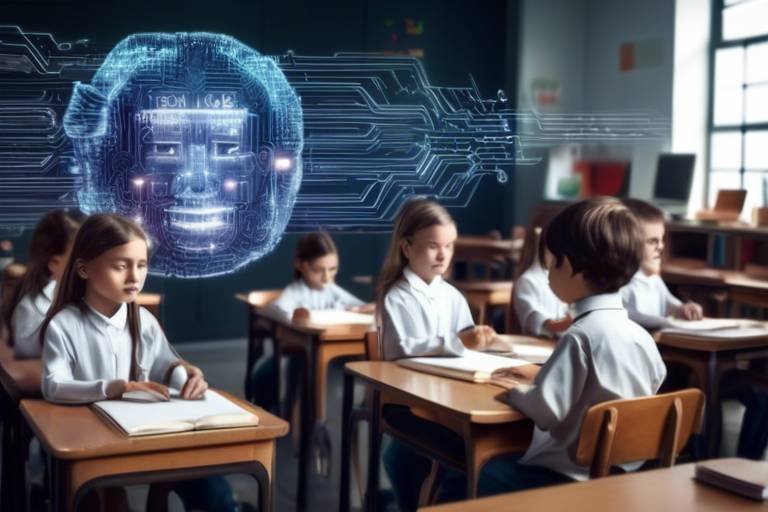The Emergence of AI in HR Functions
Artificial Intelligence (AI) is not just a buzzword anymore; it’s a transformative force reshaping the landscape of human resources (HR). Imagine a world where hiring decisions are made faster, employee engagement is personalized, and performance management is data-driven. Sounds futuristic, right? But this is the reality we are stepping into as AI technologies become integral to HR functions. The integration of AI into HR is akin to having a smart assistant that not only streamlines processes but also enhances the strategic capabilities of HR professionals.
As organizations strive for efficiency and effectiveness, the adoption of AI is proving to be a game-changer. It’s like having a turbocharger for your HR engine, amplifying your ability to attract talent, engage employees, and manage performance. The traditional HR practices that once relied heavily on manual processes are now evolving into sophisticated systems powered by algorithms and data analytics. This shift is not just about keeping up with technological trends; it’s about leveraging AI to foster a more engaged, productive, and satisfied workforce.
In this article, we will explore how AI is transforming key HR functions, including recruitment, employee engagement, and performance management. We'll dive into the specifics of how AI tools are automating tedious tasks, providing real-time feedback, and offering personalized learning experiences. By the end, you’ll see how embracing AI can lead to a more dynamic and responsive HR environment, ultimately driving organizational success.
AI is revolutionizing recruitment by automating candidate sourcing, screening resumes, and improving the overall efficiency of hiring processes. Think about it: instead of sifting through hundreds of resumes, AI can quickly identify the best candidates based on predefined criteria. This not only saves time but also allows HR professionals to focus on what really matters—strategic decision-making. With AI, the recruitment process becomes less of a chore and more of a strategic initiative that aligns with the organization's goals.
Engagement is the heartbeat of any organization, and AI tools are here to facilitate personalized employee experiences. Imagine receiving tailored feedback that resonates with your individual work style and preferences. AI makes this possible, fostering a more engaged workforce, which in turn improves overall job satisfaction and retention rates. By utilizing AI-driven surveys and feedback mechanisms, organizations can gain valuable insights into workplace culture and employee sentiment.
Utilizing AI to analyze employee feedback allows organizations to gain insights into workplace culture and employee sentiment, enabling timely interventions to enhance morale and productivity. These AI-driven surveys can pinpoint areas of concern before they escalate, ensuring a proactive approach to employee engagement.
Implementing AI-driven platforms for real-time feedback encourages open communication. Employees can voice their concerns and suggestions promptly, leading to a more responsive HR approach. This immediacy not only builds trust but also creates a culture where feedback is valued and acted upon.
Predictive analytics powered by AI can identify potential disengagement trends. This allows HR teams to proactively address issues before they escalate, thus maintaining a motivated workforce. Think of it as having a radar that detects storms before they hit, giving organizations the chance to prepare and respond effectively.
AI can tailor learning experiences to individual employee needs. This personalization helps organizations develop their talent more effectively, ensuring continuous skill enhancement aligned with career goals. Instead of a one-size-fits-all training program, employees receive customized learning paths that cater to their unique strengths and aspirations.
AI technologies are reshaping performance management by providing data-driven insights, facilitating continuous feedback, and enabling more objective evaluations of employee performance. This shift is crucial in creating a culture of transparency and accountability.
AI can analyze performance data over time, offering a comprehensive view of employee contributions. This helps managers conduct fair and unbiased performance reviews, eliminating the pitfalls of subjective evaluations. It’s like having a crystal ball that provides clarity on employee performance, making the review process smoother and more effective.
Implementing continuous feedback systems powered by AI fosters a culture of ongoing improvement. Employees receive timely insights and can adjust their performance accordingly. This real-time feedback loop ensures that everyone is aligned and moving toward common goals.
- How is AI improving recruitment processes?
AI automates candidate sourcing and screening, allowing HR professionals to focus on strategic tasks. - Can AI enhance employee engagement?
Yes, AI personalizes feedback and communication, leading to higher job satisfaction and retention. - What role does predictive analytics play in HR?
Predictive analytics helps identify disengagement trends, allowing proactive interventions. - How does AI impact performance management?
AI provides data-driven insights for fair evaluations and fosters continuous feedback.

Transforming Recruitment Processes
The landscape of recruitment is undergoing a dramatic transformation, and at the heart of this evolution is artificial intelligence (AI). Imagine a world where the time-consuming tasks of sourcing candidates and screening resumes are handled by smart algorithms, freeing up HR professionals to focus on what they do best: making strategic decisions that shape the future of their organizations. AI is not just a buzzword; it’s a game-changer that is enhancing the efficiency and effectiveness of hiring processes.
Consider the traditional recruitment process, which often resembles a daunting maze. Recruiters sift through countless resumes, trying to identify the right fit for their company. This can lead to fatigue and oversight, causing potentially great candidates to be overlooked. However, with AI, this process becomes streamlined. AI algorithms can analyze hundreds of resumes in mere seconds, identifying key qualifications and matching them with job descriptions. This not only saves time but also increases the likelihood of finding the perfect candidate, as AI can highlight skills and experiences that human eyes might miss.
Furthermore, AI-driven tools can enhance the candidate experience. For instance, chatbots can engage with candidates in real-time, answering their questions and providing updates on their application status. This level of interaction not only keeps candidates informed but also gives them a sense of connection to the company, which is crucial in today’s competitive job market. When candidates feel valued and engaged, they are more likely to view the organization positively, regardless of the outcome of their application.
Another significant advantage of AI in recruitment is its ability to reduce bias. Traditional hiring practices can sometimes be influenced by unconscious biases, leading to less diverse workplaces. AI can help mitigate this issue by focusing solely on the skills and qualifications of candidates, promoting a more equitable hiring process. By utilizing AI, companies can ensure that they are selecting candidates based on merit rather than subjective factors.
To illustrate the impact of AI on recruitment processes, consider the following table that outlines key AI applications in recruitment:
| AI Application | Description | Benefits |
|---|---|---|
| Resume Screening | Automated analysis of resumes based on job requirements. | Saves time, increases efficiency, reduces human error. |
| Chatbots | Real-time interaction with candidates for inquiries and updates. | Enhances candidate experience, provides timely information. |
| Predictive Analytics | Analyzes data to forecast candidate success and retention. | Improves hiring decisions, reduces turnover rates. |
| Bias Reduction | Focuses on objective criteria for candidate evaluation. | Promotes diversity and inclusion in hiring. |
As we delve deeper into the world of AI in recruitment, it becomes clear that these technologies are not just tools but rather partners in the hiring process. They empower HR professionals to make informed decisions, enhance the candidate experience, and create a more inclusive workplace. With AI, the future of recruitment looks not only efficient but also promising, paving the way for organizations to find the best talent available.

Enhancing Employee Engagement
In today’s fast-paced work environment, keeping employees engaged is more crucial than ever. Employee engagement isn’t just a buzzword; it’s a vital component that can significantly impact an organization’s success. With the emergence of artificial intelligence (AI), companies now have innovative tools at their disposal to enhance employee engagement in ways that were previously unimaginable. Imagine being able to tailor experiences and feedback to individual employees, making them feel valued and understood. That’s the power of AI!
AI tools can facilitate personalized employee experiences through tailored feedback and communication. This not only fosters a more engaged workforce but also improves overall job satisfaction and retention rates. For instance, AI can analyze patterns in employee performance and preferences, allowing HR teams to deliver customized learning opportunities and career development plans. By recognizing individual strengths and areas for improvement, organizations can create a more fulfilling work environment. After all, who doesn’t want to feel like their contributions matter?
Utilizing AI to analyze employee feedback allows organizations to gain insights into workplace culture and employee sentiment. This is where the magic happens! By leveraging AI-driven surveys, companies can gather real-time data on employee satisfaction, engagement levels, and morale. Such insights enable timely interventions, ensuring that any issues are addressed before they escalate. For example, if AI identifies a trend of declining engagement in a particular department, HR can proactively implement strategies to boost morale, such as team-building activities or recognition programs.
Implementing AI-driven platforms for real-time feedback encourages open communication. Employees can voice their concerns and suggestions promptly, leading to a more responsive HR approach. Think of it as a two-way street: when employees feel heard, they are more likely to engage with their work and contribute positively to the company culture. Moreover, real-time feedback mechanisms allow managers to provide immediate recognition for a job well done, reinforcing positive behavior and boosting motivation.
Predictive analytics powered by AI can identify potential disengagement trends, allowing HR teams to proactively address issues before they escalate. This is akin to having a crystal ball for employee engagement! By analyzing historical data, AI can forecast which employees might be at risk of disengagement based on various factors, such as performance metrics and feedback trends. Armed with this knowledge, HR can implement targeted interventions, such as personalized coaching sessions or career development opportunities, ensuring that employees remain engaged and motivated.
In summary, AI is revolutionizing the way organizations approach employee engagement. By leveraging AI-driven tools, companies can create a more personalized, responsive, and data-informed environment that not only keeps employees engaged but also enhances overall productivity. It’s a win-win situation that leads to a thriving workplace culture!
- How does AI improve employee engagement?
AI enhances employee engagement by providing personalized feedback, real-time communication, and predictive analytics that help organizations identify and address disengagement trends. - What are AI-driven feedback mechanisms?
These are platforms that allow for continuous feedback between employees and management, promoting open communication and timely recognition of performance. - Can AI predict employee disengagement?
Yes, AI can analyze historical data and identify patterns that indicate potential disengagement, allowing HR to take proactive measures.

AI-Driven Surveys and Feedback
In today's fast-paced work environment, understanding employee sentiment is critical for fostering a positive workplace culture. Enter AI-driven surveys and feedback systems, which are revolutionizing how organizations gather insights about their employees. Imagine being able to tap into the collective pulse of your workforce with just a few clicks! AI tools can analyze vast amounts of feedback data, revealing trends and patterns that would be nearly impossible to spot manually.
These systems not only streamline the feedback process but also ensure that the feedback collected is actionable. Traditional surveys can often feel like a chore for employees, leading to low participation rates. However, AI can create dynamic surveys that adapt based on previous answers, making the experience more engaging and relevant. For instance, if an employee expresses dissatisfaction with work-life balance, the survey can automatically generate follow-up questions that delve deeper into that topic, providing richer insights.
Furthermore, AI-driven feedback mechanisms allow organizations to analyze data in real-time. This means that HR teams can quickly identify areas needing immediate attention, whether it's a dip in morale or a lack of engagement in specific departments. The ability to act swiftly can be the difference between a minor issue and a full-blown crisis. Organizations can leverage this data to implement targeted interventions, ensuring that employees feel heard and valued.
To illustrate the impact of AI-driven surveys, consider the following table that compares traditional feedback methods with AI-enhanced solutions:
| Feature | Traditional Surveys | AI-Driven Surveys |
|---|---|---|
| Response Rate | Often low, around 30-40% | Higher, up to 70-80% |
| Data Analysis | Manual, time-consuming | Automated, real-time insights |
| Customization | Static questions | Dynamic, adaptive questions |
| Actionability | Often vague | Specific, data-driven recommendations |
In summary, the integration of AI in surveys and feedback not only enhances the quality of data collected but also empowers organizations to create a more responsive and engaged workforce. By prioritizing employee feedback and acting on it, companies can cultivate a culture of transparency and trust, ultimately leading to higher retention rates and improved productivity.
- What is AI-driven feedback? AI-driven feedback utilizes artificial intelligence to analyze and interpret employee responses, offering insights that can help improve workplace culture.
- How does AI improve survey response rates? AI can create engaging, dynamic surveys that adapt to responses, making the process feel more relevant and less tedious for employees.
- Can AI help with real-time feedback? Yes! AI tools can analyze feedback as it comes in, allowing organizations to address issues promptly.
- What are the benefits of using AI for employee surveys? Benefits include higher response rates, actionable insights, and the ability to quickly identify and address employee concerns.

Real-Time Feedback Mechanisms
In today's fast-paced work environment, the ability to receive and act on feedback in real-time is nothing short of a game-changer. Gone are the days when feedback was confined to annual reviews or quarterly check-ins. With the advent of AI-driven platforms, organizations can now foster a culture of transparency and responsiveness, allowing employees to voice their concerns and suggestions promptly. This shift not only enhances employee satisfaction but also significantly boosts overall productivity.
Imagine a scenario where an employee encounters a challenge on a project. Instead of waiting weeks for a formal review, they can instantly communicate their issues through an AI-enabled feedback tool. This immediacy allows for quicker resolutions and encourages a more collaborative atmosphere. The traditional hierarchical barriers that often stifle communication are diminished, creating a more open and inclusive workplace culture.
Moreover, real-time feedback mechanisms can be tailored to suit the unique needs of each organization. For instance, companies can implement various channels such as:
- Instant Messaging Platforms: Tools like Slack or Microsoft Teams can integrate AI bots that prompt employees to share feedback on their tasks or team dynamics.
- Mobile Apps: Custom apps can be developed to allow employees to submit feedback on the go, ensuring that their voices are heard no matter where they are.
- Anonymous Surveys: AI can facilitate quick, anonymous surveys that gather honest insights from employees regarding their experiences and challenges.
By utilizing these mechanisms, companies can not only collect feedback more efficiently but also analyze it in real-time. This analysis can reveal trends and patterns, allowing HR teams to implement timely interventions. For example, if a significant number of employees express dissatisfaction with a particular aspect of their job, HR can swiftly address the issue before it escalates into a larger problem.
Furthermore, real-time feedback fosters a culture of continuous improvement. Employees feel empowered to share their thoughts and suggestions, knowing that their input can lead to immediate changes. This not only enhances job satisfaction but also cultivates a sense of ownership among team members, which is crucial for long-term retention. In essence, real-time feedback mechanisms transform the way organizations interact with their employees, leading to a more engaged and motivated workforce.
Q1: What are the benefits of real-time feedback mechanisms in the workplace?
A1: Real-time feedback mechanisms enhance communication, foster a culture of transparency, and enable quicker resolutions to issues, leading to increased employee satisfaction and productivity.
Q2: How can companies implement real-time feedback systems?
A2: Companies can implement real-time feedback systems through instant messaging platforms, mobile apps, and anonymous surveys, all powered by AI to analyze and act on the feedback received.
Q3: Can real-time feedback improve employee retention?
A3: Yes, by empowering employees to voice their concerns and suggestions, organizations can address issues promptly, leading to higher job satisfaction and improved retention rates.

Predictive Analytics for Engagement
In the ever-evolving landscape of human resources, predictive analytics has emerged as a game changer, especially when it comes to employee engagement. Imagine having the ability to foresee potential challenges before they escalate into major issues—this is precisely what predictive analytics offers to HR teams. By leveraging vast amounts of data, organizations can identify patterns and trends that indicate employee disengagement, allowing them to take proactive measures to maintain a motivated workforce.
At its core, predictive analytics utilizes algorithms and statistical models to analyze historical data and forecast future outcomes. For instance, by examining factors such as employee turnover rates, satisfaction survey results, and even attendance records, HR professionals can pinpoint which employees may be at risk of disengagement. This insight enables them to implement targeted interventions tailored to individual needs, fostering a supportive environment that encourages retention and productivity.
Consider a scenario where an organization notices a trend of declining engagement scores among a specific department. With predictive analytics, HR can delve deeper into the data to uncover underlying issues such as workload imbalance, lack of career progression, or inadequate recognition. By addressing these concerns head-on, the organization not only improves morale but also enhances overall performance.
Moreover, predictive analytics can be integrated with other AI-driven tools to create a comprehensive engagement strategy. For example, when combined with real-time feedback mechanisms, HR can continuously monitor employee sentiment and adjust their strategies dynamically. This agile approach ensures that interventions are timely and relevant, ultimately leading to a more engaged and satisfied workforce.
To illustrate the impact of predictive analytics, consider the following table that outlines the key benefits:
| Benefit | Description |
|---|---|
| Proactive Interventions | Identifying disengagement trends early allows HR to take action before issues escalate. |
| Personalized Strategies | Tailoring approaches based on individual employee data enhances effectiveness. |
| Improved Retention | Addressing employee concerns early leads to higher retention rates. |
| Data-Driven Decisions | Utilizing analytics ensures that HR strategies are based on solid evidence rather than gut feelings. |
In summary, the integration of predictive analytics into employee engagement strategies is not just a trend; it’s a necessity in today’s competitive landscape. By harnessing the power of data, organizations can foster a culture of engagement that not only benefits employees but also drives organizational success.
- What is predictive analytics in HR? Predictive analytics in HR refers to the use of data analysis techniques to predict future employee behaviors and trends, helping organizations make informed decisions regarding employee engagement and retention.
- How can predictive analytics improve employee engagement? By identifying trends and potential disengagement early, HR can implement targeted interventions that address employee concerns, leading to improved engagement and satisfaction.
- Is predictive analytics easy to implement? While it requires investment in technology and data infrastructure, many modern HR software solutions offer built-in predictive analytics capabilities, making implementation more accessible.
- What types of data are used in predictive analytics? Common data sources include employee surveys, performance metrics, attendance records, and turnover rates, among others.

Personalized Learning and Development
In today's fast-paced work environment, is more than just a buzzword; it’s a crucial strategy for enhancing employee skills and satisfaction. Imagine a world where each employee receives training tailored to their unique needs, preferences, and career goals. This is where AI steps in, transforming traditional learning approaches into dynamic, individualized experiences.
AI-powered platforms analyze various data points, such as past performance, learning styles, and career aspirations, to curate personalized learning paths for employees. This means that rather than a one-size-fits-all training program, employees can engage in courses and workshops that resonate with their specific skill gaps and interests. For instance, if an employee shows a keen interest in project management but struggles with time management, the AI can suggest focused training modules to enhance those skills. It's like having a personal coach available 24/7!
Furthermore, the integration of AI in learning and development can significantly improve employee engagement. When employees feel that their growth is being prioritized, they are more likely to invest their time and effort into their roles. The opportunity for continuous skill enhancement not only aligns with their career goals but also fosters a sense of loyalty to the organization. Companies that adopt personalized learning strategies often see a boost in retention rates, as employees are less likely to seek opportunities elsewhere when they feel supported in their professional journey.
To illustrate how AI can enhance personalized learning, consider the following table:
| AI Capability | Benefit |
|---|---|
| Adaptive Learning Paths | Tailors training based on individual progress and preferences |
| Skill Gap Analysis | Identifies specific areas for improvement and recommends targeted resources |
| On-Demand Learning Resources | Provides access to a variety of learning materials anytime, anywhere |
| Performance Tracking | Monitors progress and adjusts learning paths accordingly |
In addition to these capabilities, AI can also facilitate peer learning by connecting employees with similar interests or skill sets, promoting collaboration and knowledge sharing. This social aspect of learning can create a more cohesive work environment, where employees feel part of a community working towards common goals.
Ultimately, the shift towards personalized learning and development through AI is not just about enhancing skills; it’s about creating a culture of continuous improvement and empowerment. Organizations that embrace this trend will not only see improved employee performance but also a more engaged and satisfied workforce. As we look to the future, it’s clear that the intersection of AI and learning is a game-changer in how we develop talent and drive organizational success.
- What is personalized learning and development?
Personalized learning and development refers to tailored training programs designed to meet the specific needs and goals of individual employees, enhancing their skills and career growth. - How does AI contribute to personalized learning?
AI analyzes employee data to create customized learning paths, recommend relevant resources, and track progress, ensuring that training is aligned with individual needs. - What are the benefits of personalized learning?
Benefits include increased employee engagement, improved retention rates, and enhanced skill development, leading to a more motivated and productive workforce.

Streamlining Performance Management
In today's fast-paced work environment, performance management is no longer just a once-a-year event. Companies are increasingly adopting AI technologies to streamline this crucial function, transforming the way they assess and enhance employee performance. Imagine a world where feedback is not just a formality but a continuous conversation. With AI, this is becoming a reality. By leveraging data-driven insights, organizations can now facilitate continuous feedback, allowing employees to adapt and improve in real-time.
One of the most significant advantages of AI in performance management is its ability to provide data-driven performance reviews. Traditional reviews often rely on subjective assessments, which can lead to biases and inconsistencies. However, AI can analyze performance data over time, offering a comprehensive view of an employee's contributions. This means that managers can conduct reviews that are not only fair but also grounded in concrete evidence. Think of it as having a personal coach who tracks your progress and provides actionable insights, rather than relying solely on your coach's impressions.
Moreover, the implementation of continuous feedback systems powered by AI fosters a culture of ongoing improvement. Employees no longer have to wait for annual reviews to understand how they are performing. Instead, they receive timely insights that allow them to adjust their performance accordingly. This shift not only enhances individual productivity but also contributes to a more dynamic and engaged workforce. Imagine being able to tweak your work style based on real-time feedback, much like how athletes adjust their techniques based on performance analytics.
To illustrate the impact of AI on performance management, consider the following table that outlines key benefits:
| Benefit | Description |
|---|---|
| Objective Evaluations | AI analyzes performance data to eliminate biases in reviews. |
| Continuous Improvement | Real-time feedback helps employees make immediate adjustments. |
| Enhanced Employee Engagement | Regular feedback fosters a culture of open communication. |
| Data-Driven Insights | AI provides actionable insights based on performance metrics. |
As organizations continue to embrace AI, it's essential to understand that technology is not here to replace human judgment but to enhance it. AI tools can sift through mountains of data, but the human touch is still vital in interpreting that data and making informed decisions. By combining AI capabilities with human intuition, companies can create a performance management system that is not only efficient but also empathetic.
In conclusion, the integration of AI into performance management is a game-changer. It empowers organizations to move away from outdated practices and embrace a more proactive and data-driven approach. By streamlining performance management, companies can ensure that their employees are not only meeting expectations but are also motivated to exceed them. After all, a motivated workforce is the backbone of any successful organization.
- How does AI improve performance management? AI enhances performance management by providing data-driven insights, enabling continuous feedback, and facilitating objective evaluations.
- What are the benefits of continuous feedback systems? Continuous feedback systems promote ongoing improvement, increase employee engagement, and allow for timely adjustments in performance.
- Can AI completely replace human judgment in performance reviews? No, AI complements human judgment by providing data insights, but the human touch is essential for interpreting the data and making decisions.
- What is the future of performance management with AI? The future of performance management with AI is likely to be more dynamic, personalized, and focused on continuous improvement rather than annual reviews.

Data-Driven Performance Reviews
In today's fast-paced business environment, have emerged as a game-changer for organizations seeking to enhance their employee evaluation processes. Gone are the days of relying solely on subjective opinions and gut feelings when assessing an employee's contributions. Instead, companies are now leveraging artificial intelligence to analyze performance data systematically, providing a clearer and more objective view of each employee's impact on the organization.
Imagine walking into a performance review armed with a treasure trove of data that highlights not just what an employee has done, but how their efforts align with the company's goals. AI can sift through mountains of data, identifying patterns and trends that might otherwise go unnoticed. For example, it can evaluate metrics such as project completion rates, customer feedback, and collaboration levels, offering a comprehensive picture of an employee's performance.
One of the most significant benefits of data-driven performance reviews is the elimination of bias. Traditional reviews often fall prey to personal biases or recent events overshadowing an employee's overall performance. With AI, the focus shifts to hard data, which means that every employee is evaluated on the same criteria, leading to fairer assessments. This not only fosters trust in the review process but also boosts morale among employees who feel their contributions are recognized based on merit rather than favoritism.
Furthermore, AI-driven insights can help managers identify areas where employees excel and where they might need development. For instance, if data shows that an employee consistently performs well in team projects but struggles with individual tasks, managers can tailor their feedback and support accordingly. This personalized approach not only enhances employee growth but also aligns individual performance with the organization's strategic objectives.
To illustrate the effectiveness of data-driven performance reviews, consider the following table that outlines typical metrics analyzed during these reviews:
| Metric | Description | Purpose |
|---|---|---|
| Project Completion Rate | Percentage of projects completed on time | Measures reliability and time management |
| Customer Feedback Scores | Ratings received from clients or customers | Assesses quality of work and client satisfaction |
| Peer Reviews | Feedback from colleagues on collaboration and teamwork | Evaluates interpersonal skills and team dynamics |
| Skill Development Progress | Tracking improvements in specific skills | Identifies areas for further training and development |
In conclusion, the shift towards is not just a trend; it's a necessity in the modern workplace. By harnessing the power of AI, organizations can ensure that their performance evaluations are fair, comprehensive, and constructive. This not only benefits the employees being reviewed but also strengthens the organization as a whole, fostering a culture of continuous improvement and accountability.
- What are data-driven performance reviews?
Data-driven performance reviews utilize quantitative metrics and AI analysis to assess employee performance objectively, rather than relying on subjective opinions. - How does AI enhance performance reviews?
AI analyzes vast amounts of performance data, identifies trends, and provides insights that help managers conduct fair and informed evaluations. - What metrics are commonly used in data-driven reviews?
Common metrics include project completion rates, customer feedback scores, peer reviews, and skill development progress. - Can data-driven reviews eliminate bias?
Yes, by focusing on objective data, organizations can reduce biases that often affect traditional performance reviews, leading to fairer assessments.

Continuous Feedback Systems
In today's fast-paced work environment, have emerged as a game-changer for organizations aiming to foster a culture of growth and improvement. Unlike traditional performance reviews, which often occur annually or semi-annually, continuous feedback systems promote an ongoing dialogue between employees and their managers. This approach not only helps in identifying areas for improvement more swiftly but also encourages a more engaged workforce.
Imagine a scenario where an employee receives feedback not just once a year, but regularly. This is the essence of continuous feedback systems. They allow for real-time insights that can be transformative. For instance, if an employee struggles with a specific project, timely feedback can help them adjust their approach immediately, rather than waiting for a formal review to uncover the issue. This immediacy can significantly enhance productivity and morale.
Moreover, continuous feedback systems leverage AI technologies to analyze performance data and employee interactions. By utilizing these systems, companies can:
- Identify performance trends over time
- Provide personalized coaching opportunities
- Encourage open communication and transparency
One of the most significant benefits of these systems is their ability to facilitate a two-way conversation. Employees are not just passive recipients of feedback; they are encouraged to share their thoughts, concerns, and suggestions. This dialogue creates a more inclusive atmosphere and helps HR teams respond to issues as they arise, rather than after they have escalated.
To illustrate the effectiveness of continuous feedback systems, consider the following table that compares traditional performance reviews with continuous feedback mechanisms:
| Aspect | Traditional Performance Reviews | Continuous Feedback Systems |
|---|---|---|
| Frequency | Annual or semi-annual | Ongoing |
| Feedback Type | Summative | Formative |
| Employee Engagement | Low | High |
| Response Time | Delayed | Immediate |
As shown in the table, the shift from traditional performance reviews to continuous feedback systems can lead to a more dynamic and engaged workplace. The ability to provide immediate feedback creates an environment where employees feel supported and valued. They can make adjustments to their work in real-time, leading to higher quality outcomes and greater job satisfaction.
In conclusion, adopting continuous feedback systems is not just about changing how performance is managed; it's about revolutionizing the entire employee experience. By integrating these systems into their HR practices, organizations can cultivate a culture of continuous improvement and engagement, ultimately driving better results for both employees and the organization as a whole.
- What is a continuous feedback system? A continuous feedback system is an ongoing process where employees receive regular feedback from their managers and peers, rather than waiting for scheduled performance reviews.
- How does AI enhance continuous feedback systems? AI can analyze performance data and communication patterns to provide actionable insights, helping organizations respond to employee needs in real-time.
- What are the benefits of continuous feedback? Benefits include improved employee engagement, faster identification of performance issues, and a more supportive work environment.
- Can continuous feedback replace traditional performance reviews? While continuous feedback can complement traditional reviews, it does not necessarily replace them. Many organizations find a hybrid approach works best.
Frequently Asked Questions
- How is AI transforming recruitment processes?
AI is revolutionizing recruitment by automating tasks such as candidate sourcing and resume screening. This efficiency allows HR professionals to focus more on strategic decision-making rather than getting bogged down in administrative tasks.
- What role does AI play in enhancing employee engagement?
AI tools personalize employee experiences by providing tailored feedback and communication. This fosters a more engaged workforce, which leads to higher job satisfaction and better retention rates.
- How can AI-driven surveys improve workplace culture?
AI analyzes employee feedback to provide insights into workplace culture and sentiment. This enables organizations to make timely interventions that enhance morale and productivity.
- What are real-time feedback mechanisms and why are they important?
Real-time feedback mechanisms allow employees to voice their concerns and suggestions promptly. Implementing these AI-driven platforms fosters open communication, leading to a more responsive HR approach.
- How does predictive analytics contribute to employee engagement?
Predictive analytics can identify potential disengagement trends, allowing HR teams to proactively address issues before they escalate. This helps maintain a motivated and engaged workforce.
- In what ways can AI personalize learning and development?
AI tailors learning experiences to meet individual employee needs, ensuring that skill enhancement aligns with career goals. This personalized approach helps organizations develop their talent more effectively.
- How does AI reshape performance management?
AI provides data-driven insights that facilitate continuous feedback and enable more objective evaluations of employee performance. This helps create a fairer and more transparent performance management process.
- What benefits do data-driven performance reviews offer?
Data-driven performance reviews offer a comprehensive view of employee contributions over time. This helps managers conduct fair and unbiased evaluations, ensuring that recognition and feedback are based on concrete data.
- What is the significance of continuous feedback systems?
Continuous feedback systems powered by AI foster a culture of ongoing improvement. Employees receive timely insights that allow them to adjust their performance, promoting a more dynamic and responsive workplace.

